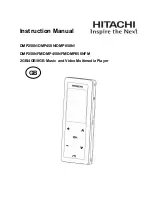
15
Force Transmit
This field allows the user to set a maximum time limit between transmissions of data. The value
set in this field multiplied by 100 ms determines the Force Transmit time. When the elapsed time
reaches the time configured in this field, the TCP/IP protocol will pack the data currently in the
serial buffer into a packet and send it out the Ethernet port.
Port Status
This field indicates whether a serial port is connected to a server or by a client.
TCP/UDP Port
The TCP/UDP Port defines a communication port number. In all modes of operating, Virtual
COM, Direct IP, and Paired modes, both the TCP/UDP Client and server port settings must
match.
For example the Virtual COM defaults setting TCP/UDP Port # 4000. If the port # of the
TRP-C32S is changed to 4001, the Virtual COM TCP/UDP Port will have to be changed to 4001.
Serial Port Mode
This allows configuration of the serial server for the following modes of operation:
• Console – When this mode is selected and the server is updated, a PC running a
communication program such as Hyper-terminal can communicate with the
serial server via the Console Mode serial port (Port 1 on TRP-C32S), displaying
the Server Properties screen and allowing configuration of the server and its
ports.
• Upgrade – When this mode is selected and the server is updated, firmware can be uploaded
into the serial server via the Console Mode serial port or a virtual COM port
appeared to the number of the Console Mode serial port.
• Factory – When this mode is selected and the server is updated, it will revert the server to
its default configuration.
• RS-232 – When this mode is selected and the server is updated, the selected serial port
will become a RS-232 serial port on the server.
• RS-422 – When this mode is selected and the server is updated, the selected serial port
will become a RS-422 serial port on the server.
• RS-485 – When this mode is selected and the server is updated, the selected serial port will
become a RS-485 serial port on the server.













































